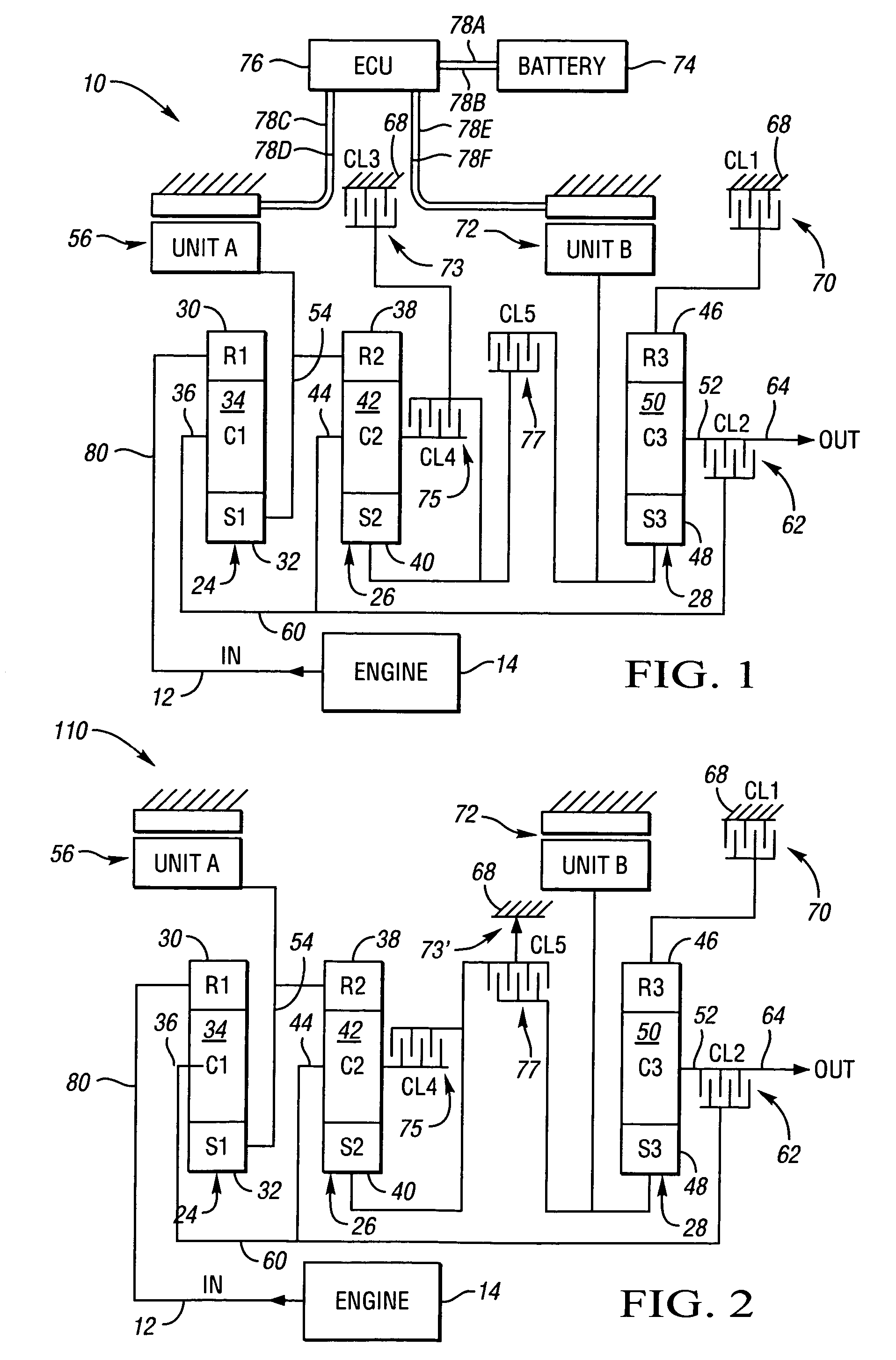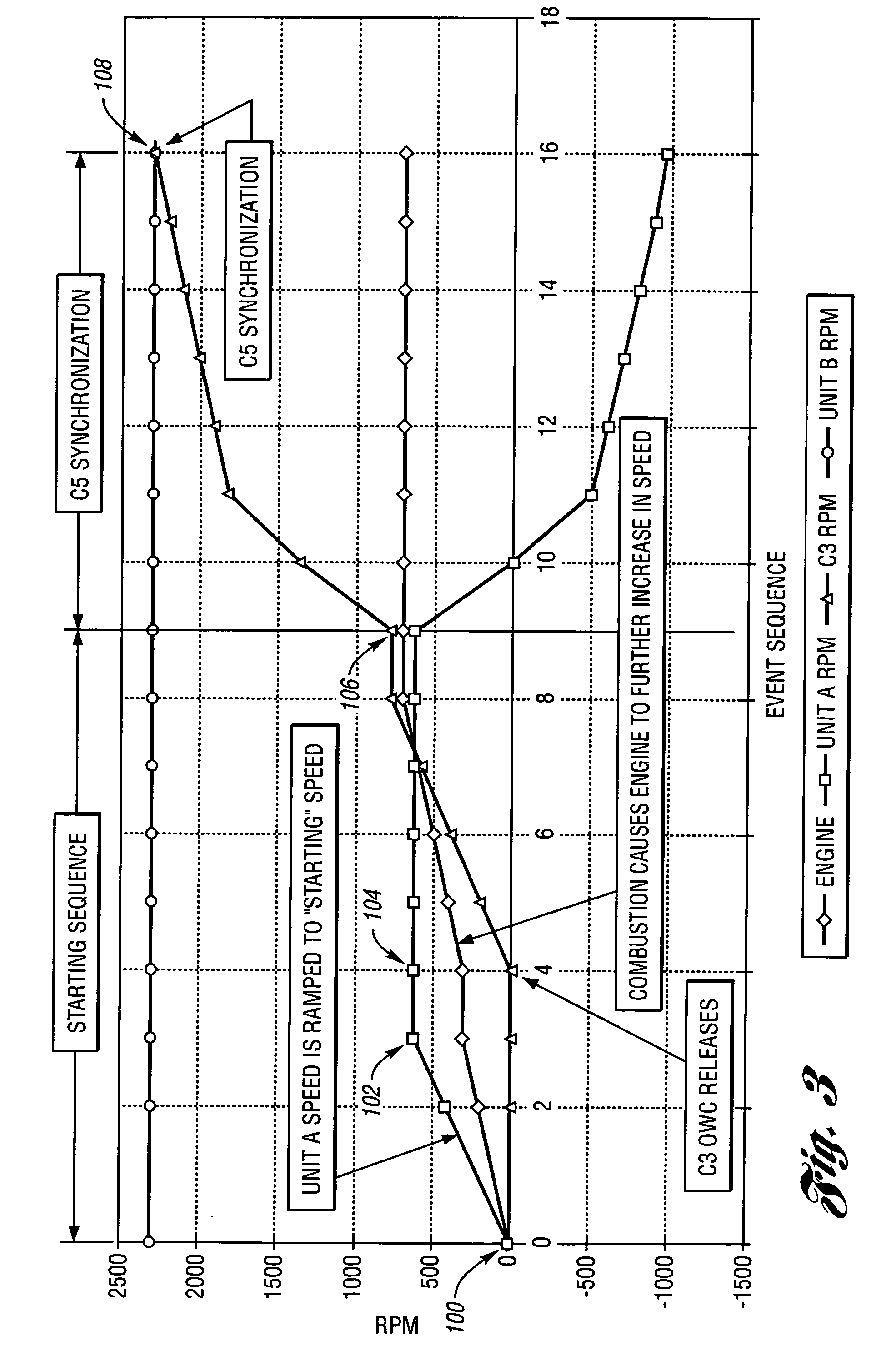Electric variable transmission with de-coupled engine charging in reverse
a technology of electric variable transmission and reverse charging, which is applied in the direction of electric propulsion mounting, transportation and packaging, and small apus and even large energy storage devices cannot meet the needs of high-average power vehicles or address duty cycles that require continuous, constant speed operation, and steep grades. , to achieve the effect of reducing the size of the second motor/generator, reducing the packaging envelope, and reducing cost and mass
- Summary
- Abstract
- Description
- Claims
- Application Information
AI Technical Summary
Benefits of technology
Problems solved by technology
Method used
Image
Examples
Embodiment Construction
[0034] One representative form of a two-mode, compound-split, electromechanical transmission embodying the concepts of the present invention is depicted in FIG. 1, and is designated generally by the numeral 10. The hybrid transmission 10 has an input member 12 that may be in the nature of a shaft which may be directly driven by an engine 14. A transient torque damper may be incorporated between the engine 14 and the input member 12 of the hybrid transmission 10. An example of a transient torque damper of the type recommended for the present usage is disclosed in detail in U.S. Pat. No. 5,009,301, which issued on Apr. 23, 1991 to General Motors Corporation and is hereby incorporated by reference in its entirety. The transient torque damper may incorporate, or be employed in conjunction with, a torque transfer device to permit selective engagement of the engine 14 with the hybrid transmission 10, but it must be understood that the torque transfer device is not utilized to change, or c...
PUM
 Login to View More
Login to View More Abstract
Description
Claims
Application Information
 Login to View More
Login to View More - R&D
- Intellectual Property
- Life Sciences
- Materials
- Tech Scout
- Unparalleled Data Quality
- Higher Quality Content
- 60% Fewer Hallucinations
Browse by: Latest US Patents, China's latest patents, Technical Efficacy Thesaurus, Application Domain, Technology Topic, Popular Technical Reports.
© 2025 PatSnap. All rights reserved.Legal|Privacy policy|Modern Slavery Act Transparency Statement|Sitemap|About US| Contact US: help@patsnap.com



